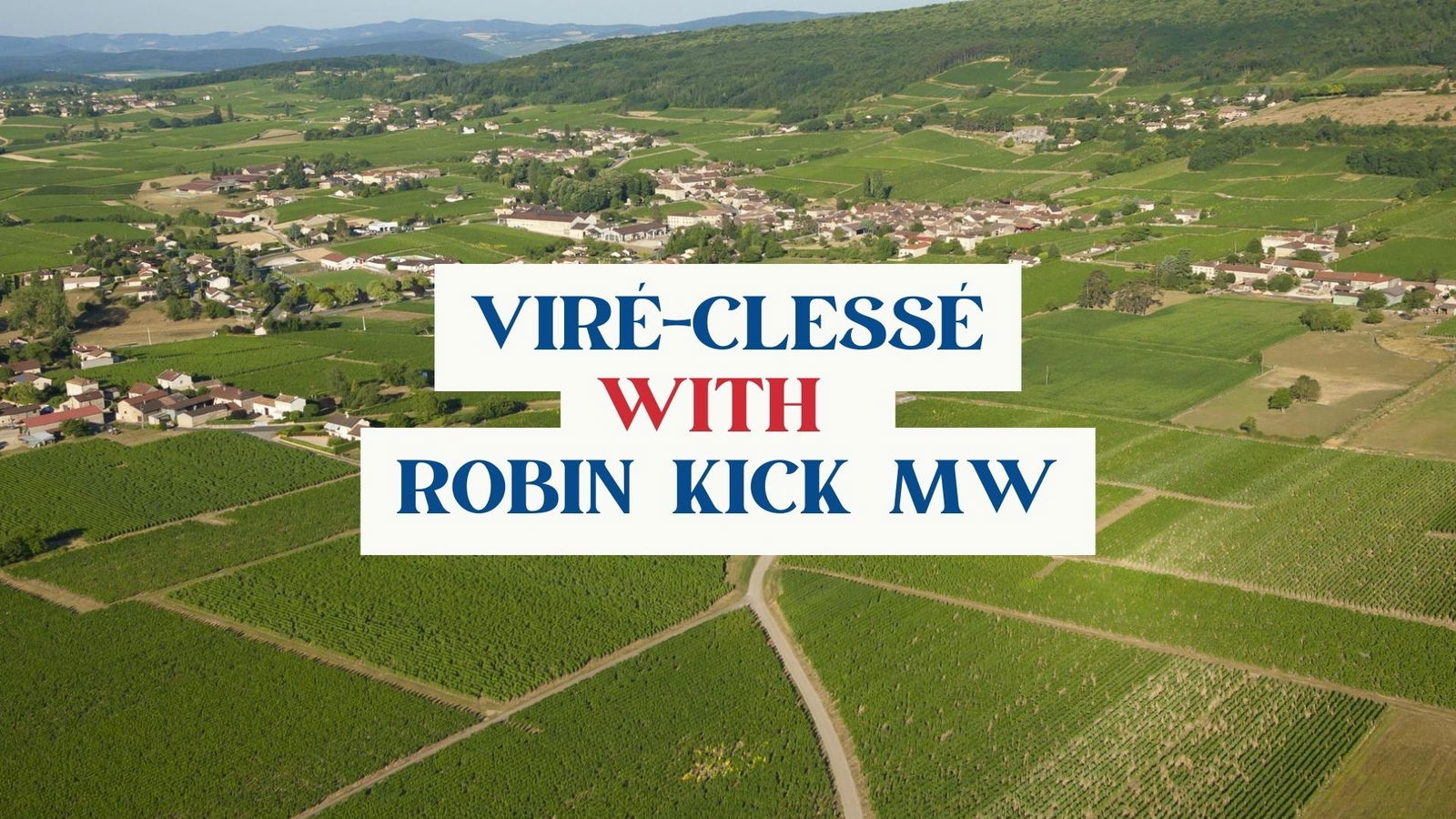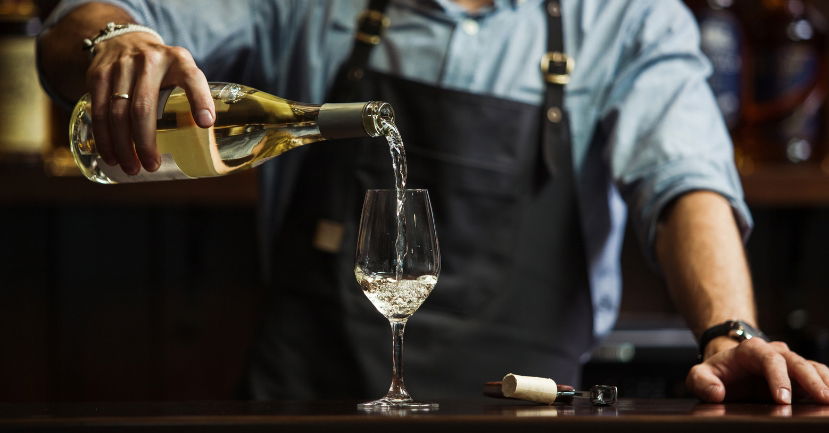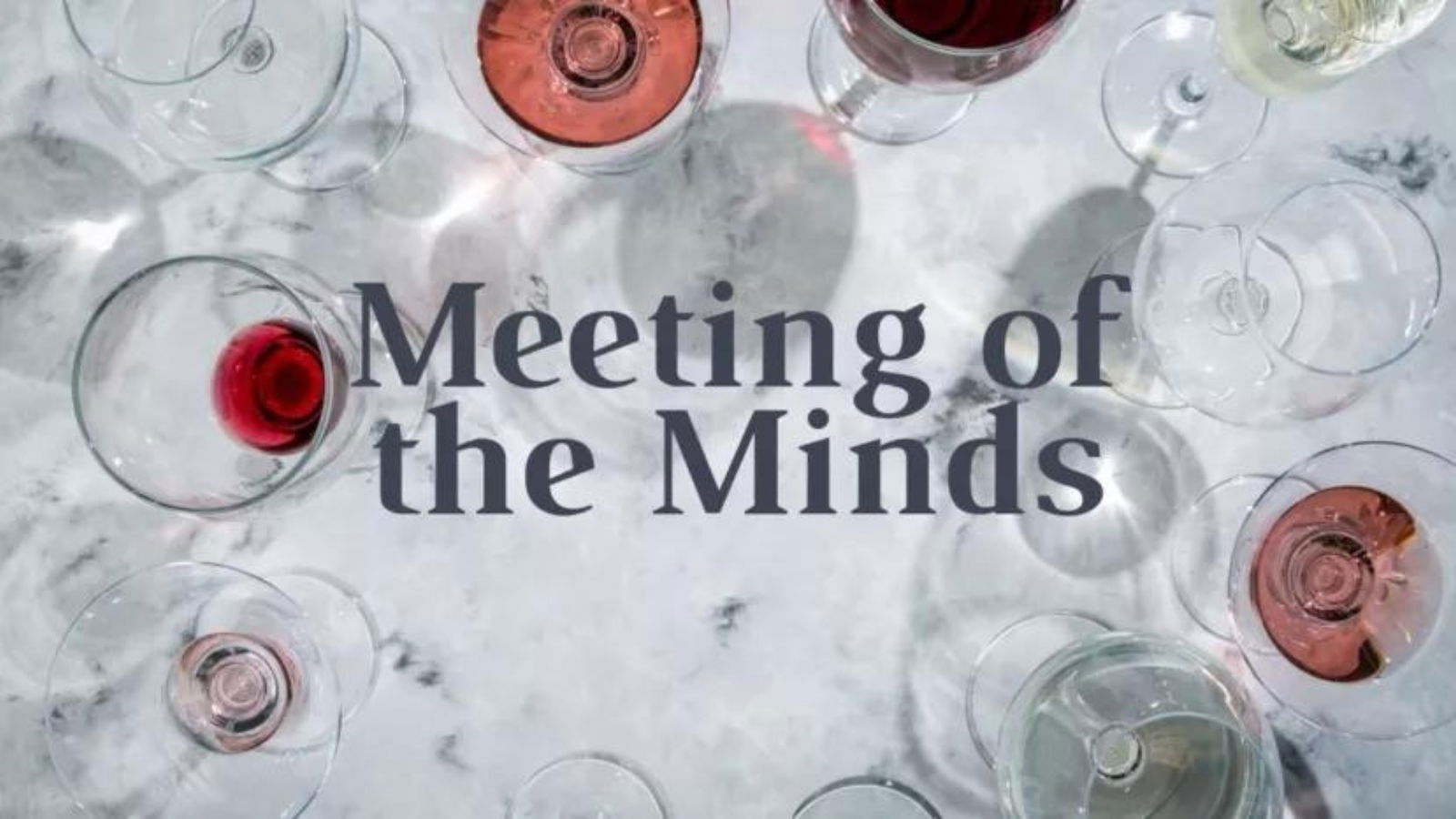BLOG
French Lessons for a Warming World
Andrew Jefford Viticulture Insights

Read Academic Advisor Andrew Jefford’s Keynote Speech to the 2020 Vancouver International Wine Festival in this specially prepared written version for the Wine Scholar Guild blog. Andrew is happy to respond to any questions or comments you may have about this post. Use the "Comments" feature at the bottom of this page.
I was working in my study at home, near Montpellier in France, on June 28th last year. I’ll always remember the date, since that morning my two brothers had rung me to say that our 88-year-old mother had just died. During the afternoon, around 25 km (15.5 miles) from where I was sitting, France’s all time heat-record was broken. It was hot in the UK too; we joked afterwards that everyone felt so warmly about our Mum that her journey heavenwards had given the summer heat a nudge.
Normally records fall by small increments. Not this one.
The previous record, which had stood since what was considered the unprecedented heatwave of August 2003 – said at the time to be ‘the hottest year in France since the Big Bang’ -- was 44.1°C (that’s 111.4°F). The afternoon temperature in the nearby village of Vérargues on June 28th 2020 measured 46°C (or almost 115°F).
In previous centuries, you might have waited 200 or 300 years to lift the national heat record by almost two degrees centigrade. We did it in 16 years.
I realized then that this process is not inching forward. It’s not a march, either. It’s not a canter. It’s a gallop.
Carbon and methane and nitrous oxide all travel without passports. They don’t require visas. They dissolve, intercontinentally. We’re all in this together, France included. French winegrowers will react to this challenge in a French way. The French way of going about things (and I’ve lived there for ten years now) may not always be a global model. French wine instincts, though, are often sound.

Drought vineyard
So what’s going to happen in vineyard regions in the future?
- Fire, to begin with, will become a ubiquitous threat, and one with terrible consequences, as we’ve recently seen in Australia, and in California and Portugal before that. My own region of Languedoc-Roussillon is vulnerable, too. Fire will mainly affect sclerophyll landscapes like the Australian bush, the French garrigue, the Californian chapparal, the South African fynbos – but no region will be immune, and the hotter summers become, the worse the problem will grow.
- Drought, too, can affect any wine region. Many traditional sources of irrigation water are under threat, notably to each side of the Andes, in Australia’s Murray-Darling basin, and in the wine regions of South Africa’s Western Cape.
- Sun burn and blocked maturation during heat-spike episodes are already regular vineyard challenges.
- It’s not certain that the major vine disease problem of our times – the cluster of afflictions bracketed together as trunk disease – is related to global warming, though generally warmer conditions, especially in winter, are favourable to the fungal pathogens which transmit these diseases.
- Wild weather is certainly as much a climate change phenomenon as fierce heat, and incidences of hail storms have greatly increased over the last 20 years in France.
- What of spring frost, which hit France hard in both 2016 and 2017? It seems counter-intuitive, but a disorderly polar vortex in the Northern Hemisphere, related to a reduction in Arctic sea ice, may make spring frosts more common in future as bulges of polar air descend unpredictably to mid-latitudes. If such frosts were to combine with the ever-earlier budburst already noted due to warming winters, the results could be catastrophic.
The major impacts of global warming on French wines themselves, meanwhile, have been greater ripeness, higher alcohol levels and increased width and wealth, all of which have implications for the balance and harmony of wines. A reduction in hang time may also lessen complexity. Classicism of style is perceived to be under threat (by classicists, at any rate).
However it is important to note that French winegrowers have not, on balance, been losers from climate change thus far. Far from it. France’s greatest wine regions have historically been placed near the northerly limits of cultivation for their key varieties, and the warming pulse has certainly lifted the occurrence of good or great vintages over the last 40 years compared to those of the century prior to that. Bordeaux’s golden era since 1982 is a notable example: all the benefits with few of the drawbacks.
We shouldn’t deny this -- but of course we can’t assume that it will continue to be the case, especially given that some negative consequences, such as fire or flood, are rapid and catastrophic. A galloping climate change scenario seems likely to bring the golden age to a close, as negative effects accrue and the ‘Goldilocks’ vintages drop away.
So what do we do about all of this, and in particular what are the French doing?
It’s best to distinguish between long-term responses and short-term responses.
The three main long-term responses suggested so far are
- to change the varieties in your vineyards from earlier ripening ones to later ripening ones;
- to move vineyards to higher altitude sites; and
- to move vineyards to higher latitude sites.
Very little of this work has yet happened in France.
- The main short-term responses suggested so far include
practical anti-hail and anti-frost measures; - adjustments to regional canopy practices; and
- earlier picking to try to harvest fruit before the must sugar levels which imply high finished alcohols have been obtained. There are also
- a suite of winery interventions which might be employed, notably acid adjustment and the removal of alcohol from finished wines.
The French have been very active in anti-hail and anti-frost measures in certain regions, since these are the pay-check threats which most directly impact crop load and hence the fundamental economic viability of vineyards. Prompt communal action by Burgundy growers in spring 2017 avoided the catastrophic crop loss from frost which the region experienced in 2016, for example.
Canopies have been evolving, which was one minor reason why the chronic harvesting difficulties experienced in Champagne in 2003 were not reproduced in 2019. Otherwise – not much, once again.
Why not? Are the French complacent?
Remember that French wine production is closely circumscribed by rules and regulations. The often intricate constaints of the appellation controlee system is certainly a factor in holding change in check.
Climate change makes it possible to grow and ripen Syrah, and produce convincing wines from it, in the Beaujolais cru villages. But if you decide to plant Syrah in a Beaujolais cru like Morgon or Juliénas, you will lose the appellation.
You can’t just move “up the hill” in Gevrey-Chambertin, though there are certainly propitious potential vineyards lying beneath the forest where the Grand Cru vineyards suddenly stop -- because the wine you make would not be Gevrey-Chambertin. Such vineyards existed in the past, and traces of the old vineyard walls can still be found in the forest, but they were not replanted after phylloxera and didn’t exist when the appellation rules came into being.
Those who decided to replant the historic Roman vineyards of Seyssuel above Vienne in the Northern Rhône in the mid-1990s are still making IGP wine, not appellation wine.
Rules and regulations are certainly a factor. There have been very few changes made to appellation regulations so far in France because of global warming. A modest look at new varieties in Bordeaux is almost the only one. No one is making a fuss about this.
It’s true that the French don’t like change and tend to fight reform, even when it’s glaringly necessary.
But the real reason is simple: we haven’t yet reached the critical point at which the economic viability of wine-producing enterprises is threatened. Fire does pose this threat in Australia and California, as does drought in South Africa, but nothing has yet done so in France. The situation doesn’t yet seem economically life-threatening to most growers. When it becomes so, the response will be swift, since viticulture has major social and political significance in France.

Frost protection: spraying the vines with water to protect the new growth
There is, though, also a kind of French wisdom pertaining to wine in general. I would suggest that there are four unwritten rules of wine practice in France.
1) The first is to know your vineyards intimately. Obviously France’s long wine-making history is an advantage here. In most places, the good vineyards were distinguished from the ordinary vineyards many decades or centuries ago.
The French pay great attention to sensual matters. The French are also permanently dissatisfied – you might almost say divinely dissatisfied – with what they have achieved. This close and restless scrutiny has gone on to reveal the great places among the good places, which is why France has led the world in terms of the elevation of certain single vineyards and parcels.
A good or a great vineyard is the product not of one factor, like annual heat inputs, but of multiple factors: soil and sub-soil, topography, rainfall, wind, day lengths, variety, cultivation decisions and practices. One factor – the heat inputs -- may change; it may get hotter. But that doesn’t mean all the other factors change, too.
Imagine that by 2050 Romanée-Conti has become too hot in most summers to make balanced, nuanced wines. The Vosne village-level vineyard of Champs Perdrix much further up the hill may now be as temperate and sweet-aired as Romanée-Conti down the hill used to be … but it will not be the same; it will not be Romanée-Conti. The soils are different; the winds are different; the sunlight angles are different. Romanée-Conti, in fact, can only ever be where it is. You can’t move the vineyard up the hill.
Nor can you simply replant and assume a continuation of greatness. Romanée-Conti planted with Grenache in a Burgundy where heat spikes reach 55°C, as they are predicted to do by the century’s end, may perhaps be good wine, but it will not be the sublime Romanée-Conti you may have been lucky enough to glimpse from time to time.
If you have a great vineyard, you can never replace it, only abandon it. The intimate knowledge of a vineyard is essential for making rational decisions about its future in a warming world. And in this respect, we must accept that some of the offered long term responses to global warming in the wine world, the ones I outlined earlier, are simplistic. Realising this compels us to take the fight to combat global warming and to decarbonise our atmosphere seriously. We can’t replace. We lose. France has a lot to lose.
2) Lesson two is respect the natural. I am not talking about “natural wine” here, a different topic altogether, but about the prevailing French view, held even by France’s largest scale winemakers, that the integrity of the raw materials is or should be sancrosanct, and for the best French wines always is sancrosanct.
The season and the place are what is inscribed in the raw materials you harvest at the point of ripeness. You have to respect them, even if that season is warmer than you might wish.
Of course there are judgement calls – about the perfect moment of ripeness, about viticulture, about the physical handing, fermentation and ageing of the wine, bearing in mind the style of ripeness of the vintage. But to pick prior to ripeness is to mute the expressive potential of your wine, even if it “retains acidity”.
Adjusting a wine’s chemical balance by adding acidity or removing alcohol means erasing the season and the place. It’s an industrialisation which risks destroying balance and harmony as well as the print of terroir in a fine wine.
I’m not saying there is no place for these things in commercial winemaking, or that they are never practiced in France: there is and they are. Global warming will often offer provocations which many feel can only be addressed in this way.
But for fine wine, for serious wine, for ambitious wine, they always mean a step backwards, and they’ll only ever be undertaken in France with extreme reluctance, as they were with very mixed results in Burgundy in 2003. French instincts are particularly sound here, and this is one contributory reason for the subtlety of the French wine offer, even in the present era of ample or prolific ripeness.
Let me talk briefly about red-wine tannins here. In my view, the natural tannin mass from grape skins, pips and sometimes stems, rather than acidity on its own, is the ultimate source of freshness, balance and profundity in most French fine red wines. Many red wine producers globally fret about loss of acidity in warm seasons without realizing that the remedy may sometimes be to hand within the composite tannic mass. This is the secret message to the world of Europe’s finest red wines.

Bunches of grapes rotten because of hail
3) Lesson three is that difference is everything. A love of wine is a love of difference – the boundless variety of the natural world duplicated in scent and flavour. So any response to climate change which erodes difference is a step backwards.
Yes, Syrah will ripen nowadays in the Beaujolais crus, and it may be that with time we come to see that a Syrah from Morgon possesses a different beauty to Syrah from anywhere else.
But we already know that a Gamay from Morgon is different to that from anywhere else, and there is much less great Gamay in the world than there is great Syrah. The French reluctance to jeopardize that Morgon difference for a Syrah which might also come from St Joseph or Crozes-Hermitage is understandable. Erode difference at your peril.
4) Lesson four, finally, is to embrace change -- slowly. I’ve already mentioned that a great vineyard can never be replaced, only abandoned: that in itself is a compelling reason for not rushing into change. But just as you can lose greatness by change, so, also, can you find it. We shouldn’t be afraid of change. Here are some examples.
- Champagne was once a region of pale and acidulous, browny-pink, grimace-inducing still wines. Technological change – glass bottles, corks, the understanding of fermentation -- gave us the Champagne we know and love today.
- Burgundy passed many centuries (including the heyday of the Ducs de Bourgogne) without Chardonnay; the Dukes of Burgundy never sipped our Montrachet. It was fortuitous biological change which gave us the white burgundy we now love.
- Much of the Medoc was once a vineless swamp; it was Dutch engineering skills which gave us the great wines of the 1855 classification. Before the C17, most of these didn’t exist.
- Sauvignon Blanc didn’t come to define Sancerre until after phylloxera; before that, it was a light and acidic red-wine region. This is a good example of advance through the experimental change consequent on catastrophe.
Yes, there will be beautiful wines we lose through climate change, though more slowly than we think; the vine has adaptive capacities, and human ingenuity few limits. There will also, though, be new variety-place combinations we discover which we cannot yet even dream of.
To conclude, just a few words about what all this might mean for local wine creation. Despite its C17 origins, ambitious winegrowing in Canada is a relatively recent endeavour – two-thirds of the country’s present-day wineries have opened in the last two decades.
Starting from scratch is very difficult, and starting from scratch in times of galloping climate change even more so. The freedom to do what you want is exciting, but it can also be a trap, since discovering good and great vineyard-and-variety combinations requires trial and error, which in the wine world means multiple decades. Consumer expectations about variety and style inhibit trial; error is costly; and climate change may be moving the goalposts as you work.
But knowing your vineyards intimately and viewing them with an open mind is the best starting point. Remember to respect the natural, and to look for balance in naturally articulated, ripe fruit; remember difference is everything, and that imitation and duplication constitute a denial of difference. There will be setbacks, but at these latitudes it is at least possible that you have some decades in the Goldilocks zone before the cactus beckons. Then, when it does, it’s time to embrace change -- slowly. We can all learn from the French.
Andrew's latest articles:
- PODCAST: Olivier Humbrecht, MW and Andrew Jefford on Alsace - Part 1
- PODCAST: Olivier Humbrecht, MW and Andrew Jefford on Alsace - Part 2
- Wine Trends in 2020: Champagne by the Numbers
- Learning and loving (without counting): a week in the hills and cellars of Alsace



